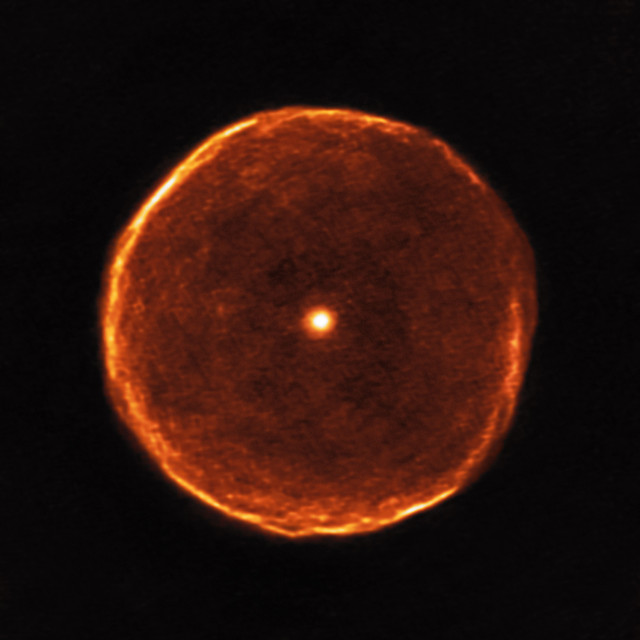
An article published in the journal “Astronomy & Astrophysics” describes a research on U Antliae, a rather exotic red giant star. A team of researchers used the ALMA radio telescope to study the bubble of ejected materials that surrounds U Antliae to better understand the evolution of stars in the last stages of their life cycle. That’s a turbulent period in which they can visibly change their volume and their brightness in relatively short times.
The star U Antliae is about 900 light-years away from Earth we see in a phase called carbon star, a red giant type with an atmosphere that has a high carbon content. Generally oxygen is predominant but in some cases the opposite occurs and the two elements combine. One consequence is the intense red color due to the fact that the compounds that are formed tend to absorb the blue frequencies of the electromagnetic spectrum.
Approximately 2,700 years ago, U Antliae rapidly ejected the materials that eventually formed a kind of bubble around it which had a very low density. The researchers led by Franz Kerschbaum of the University of Vienna used the ALMA (Atacama Large Millimeter / submillimeter Array) radio telescope, inaugurated in March 2013, to study the star, revealing that thin shell in detail. Its examination led to evidence of the presence of filamentary substructures, which are clouds of thin, wispy gases.
The use of the ALMA radio telescope allowed to get far more than images with a 3D data set, a cube of data, in which each slice represents a different wavelength. The Doppler effect causes changes in wavelengths depending on whether the gas contained in the slices is approaching or moving away from us.
In the image below you can see the movements of the gas in the side facing the Earth coded with different colors. The materials shown in blue are between us and the central star and are movinv toward us. The materials shown in red around the edge are moving away from the star but not toward the Earth.
As the data are 3D, the researchers have been able to study the whole shell of U Antliae. From the examination they could conclude that that bubble is round in a very symmetrical way. This also means that on the opposite side of the bubble the gas has movements that are symmetrical to those in the Earth-oriented side.
Carbon stars can contain not only carbon monoxide but also other compounds based on the combination with oxygen and other elements in their atmosphere. These stars make a significant contribution to interstellar dust as ejected materials end up moving far, far away, so after many millions of years they can become part of new solar systems.


